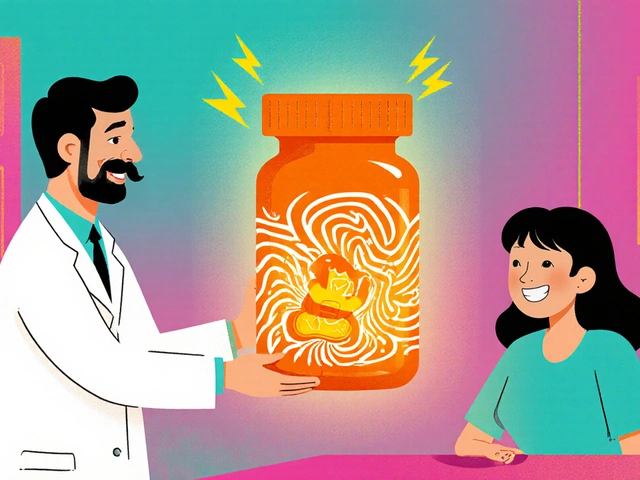Drug‑Induced Parkinsonism: What Triggers It and How to Deal
If you’ve ever heard someone say a medicine gave them “Parkinson‑like” tremors, they’re talking about drug‑induced parkinsonism (DIP). It’s not the classic form of Parkinson’s disease; it shows up because certain drugs block dopamine in your brain. The good news? In many cases you can reverse the symptoms by stopping or swapping the culprit medication.
Common Culprit Medications
Not all pills mess with dopamine, but a handful do. Antipsychotics like haloperidol and risperidone are top offenders because they’re designed to block dopamine receptors. Some anti‑nausea drugs (metoclopramide), certain calcium‑channel blockers, and even some antidepressants can also tip the balance. If you’re on any of these and notice a new wobble, stiffness, or shuffling walk, flag it right away.
Spotting the Symptoms Early
DIP usually mimics the early stages of Parkinson’s: mild tremor (often at rest), muscle rigidity, slowed movements, and sometimes trouble with balance. The key difference is timing – symptoms often appear weeks to months after starting or increasing the dose of a risky drug. Ask yourself: Did my tremor start after my doctor prescribed a new med? If yes, bring it up before the problem gets worse.
Doctors diagnose DIP by reviewing your medication list, doing a quick neurological exam, and sometimes ordering brain scans to rule out other causes. There’s no special blood test for it, so a clear medication history is crucial.
What to do if you suspect DIP? First, never stop the medication on your own – talk to the prescriber. They may lower the dose or switch you to an alternative that doesn’t hit dopamine receptors. In many cases, symptoms start fading within days of the change. If they linger, doctors might add short‑term Parkinson’s meds like levodopa to smooth things out while the brain readjusts.
Prevention is simple: keep a written list of every prescription and over‑the‑counter drug you take. When a new med is added, ask if it has dopamine‑blocking properties. If you’re already on an antipsychotic for mental health reasons, discuss the lowest effective dose with your psychiatrist – sometimes a different class can work just as well without risking DIP.
Living with DIP doesn’t have to be a permanent setback. Most people see full recovery once the offending drug is removed. Physical therapy can help regain strength and coordination faster. Simple home exercises like finger tapping, marching in place, or gentle stretching keep muscles from tightening up while your brain recalibrates.
Bottom line: if you notice any new movement problems after starting a medication, treat it like a warning sign. Early detection, honest conversation with your doctor, and a quick med switch can save you months of awkward tremors and stiffness. Stay aware, keep track of what you take, and don’t let a pill steal your smooth moves.
Pramipexole and Drug-Induced Parkinsonism: What You Need to Know
Curious about how pramipexole fits into the treatment of drug-induced parkinsonism? This article breaks down what drug-induced parkinsonism is, why it happens, and how pramipexole might help. You'll get practical tips for managing side effects, real-world insights on what to watch out for, and plain explanations without complicated jargon. Learn if pramipexole is right for you and what to discuss with your doctor. Stay informed and take better control of your health decisions.






